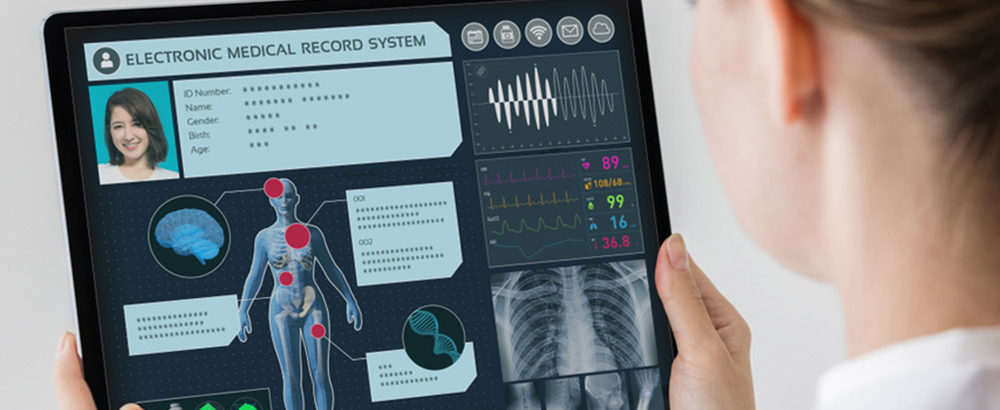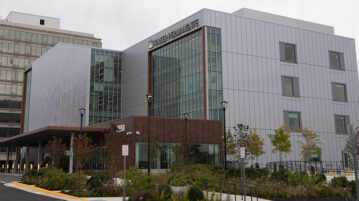By Ameya Kulkarni, MD
An increasingly powerful aspect of telemedicine is the use of portable, high-tech devices to track and relay to your doctor everything from your glucose levels, if you have diabetes, to your heart rate, blood pressure, and blood oxygen levels, if you are at risk of a stroke or heart attack.
Through remote patient monitoring, these devices allow data to be delivered on a continual basis straight to your medical team, who are automatically alerted if there is a change that requires intervention – such as an adjustment to your pacemaker, a modification in your medication, or the need to see your doctor in person.
The advantage of remote monitoring for patients is enormous. You can be monitored 24/7, rather than just during periodic office visits, so your doctor can catch problems early. You save the time and expense – gas, babysitters, lost hours at work – of frequent visits. You avoid exposure to illnesses of other patients in the waiting room. And research suggests that remote monitoring can help you better manage your condition and make it less likely that you will end up in the emergency room.
With such advantages, it’s easy to see why “medicine without walls” is taking off. The federal budget passed by Congress in February 2018 significantly expanded Medicare coverage for telemedicine, including remote monitoring. Remote monitoring devices are becoming more reliable, portable, and affordable. And electronic visits (e-visits), though not yet universally available, are becoming more common. Surveys show that patients love the convenience.
Kaiser Permanente, which is the nation’s largest nonprofit integrated health care system, reported that in 2015 more than half of its 110 million patient interactions were e-visits – via smartphones, videoconferencing, kiosks, and other high-tech tools.
At MAPMG, cardiologists use high-tech tools to monitor their patients with chronic heart conditions. Instead of frequent visits to the doctor, patients with congestive heart failure, who are at risk for dangerous fluid retention, can be monitored for sudden weight gain with electronic scales that report results wirelessly, using Bluetooth technology. Other devices chart the electrical activity of the heart continuously – whether patients are sleeping, working, or exercising – providing a more complete and accurate picture than the one-time results of an ECG administered in the doctor’s office.
Even pacemakers and implantable cardioverter defibrillators (ICDs), which help treat irregular heartbeats called arrhythmias, can be monitored and adjusted from afar. Doctors get email alerts if something goes wrong and can react immediately. In the meantime, patients can get on with their lives. Research has shown that this kind of monitoring is even better than frequent visits to the doctor at keeping heart patients out of the hospital.
Diabetic patients also benefit from remote monitoring. Last year, Southern California Permanente Medical Group launched a program in which they provide patients with Bluetooth-enabled glucose meters that make it easy, no matter where they are, to stick their finger and have the readings automatically synced to their mobile phone, then transferred to their Kaiser Permanente electronic medical record. Instead of waiting for an office visit to find out if a patient’s glucose level is dangerously high, doctors can react immediately. This is especially valuable for patients who would otherwise fall through the cracks because they can’t afford to miss work or pay for childcare or transportation, or those who are too sick or disabled to get around easily.
MAPMG launched a similar program last year for patients with hypertension (high blood pressure), which if left uncontrolled is a major risk factor for heart attack and stroke. Nearly 2,000 MAPMG patients in the northern Virginia and Washington, D.C., region are now eligible for “smart” blood-pressure cuffs they can use at home. Patients simply take their blood pressure, and the readings are transmitted automatically to their electronic medical record. Plans for the new program include automatic alerts for doctors when there is a problem so they can call patients to perhaps adjust medications or talk about lifestyle changes. The goal is not only to keep these patients out of the doctor’s office, but to make them equal partners in their own health care. MAPMG patients enrolled in the new program are already reporting that they’re finding it much easier to track and control their blood pressure.
In 2016, Kaiser researchers in California reported a 75 percent increase in the timely use of a lifesaving clot-dissolving drug in stroke patients, thanks to a new telestroke program. Already one of the most widely used telemedicine services, telestroke allows smaller hospitals that don’t have their own stroke specialists to confer immediately with specialists at larger medical centers. Timely treatment for stroke patients can dramatically improve outcomes.
Remote monitoring and other forms of telemedicine offer patients and their doctors convenience, efficiency and, in some cases, reduced costs. Even more important: The ability to monitor and treat patients, no matter where they happen to be, can save lives.
For more tips on using telemedicine, visit MAPMG on Health, or watch this video interview of MAPMG cardiologist Ameya R. Kulkarni, MD, about remote monitoring of heart patients.




